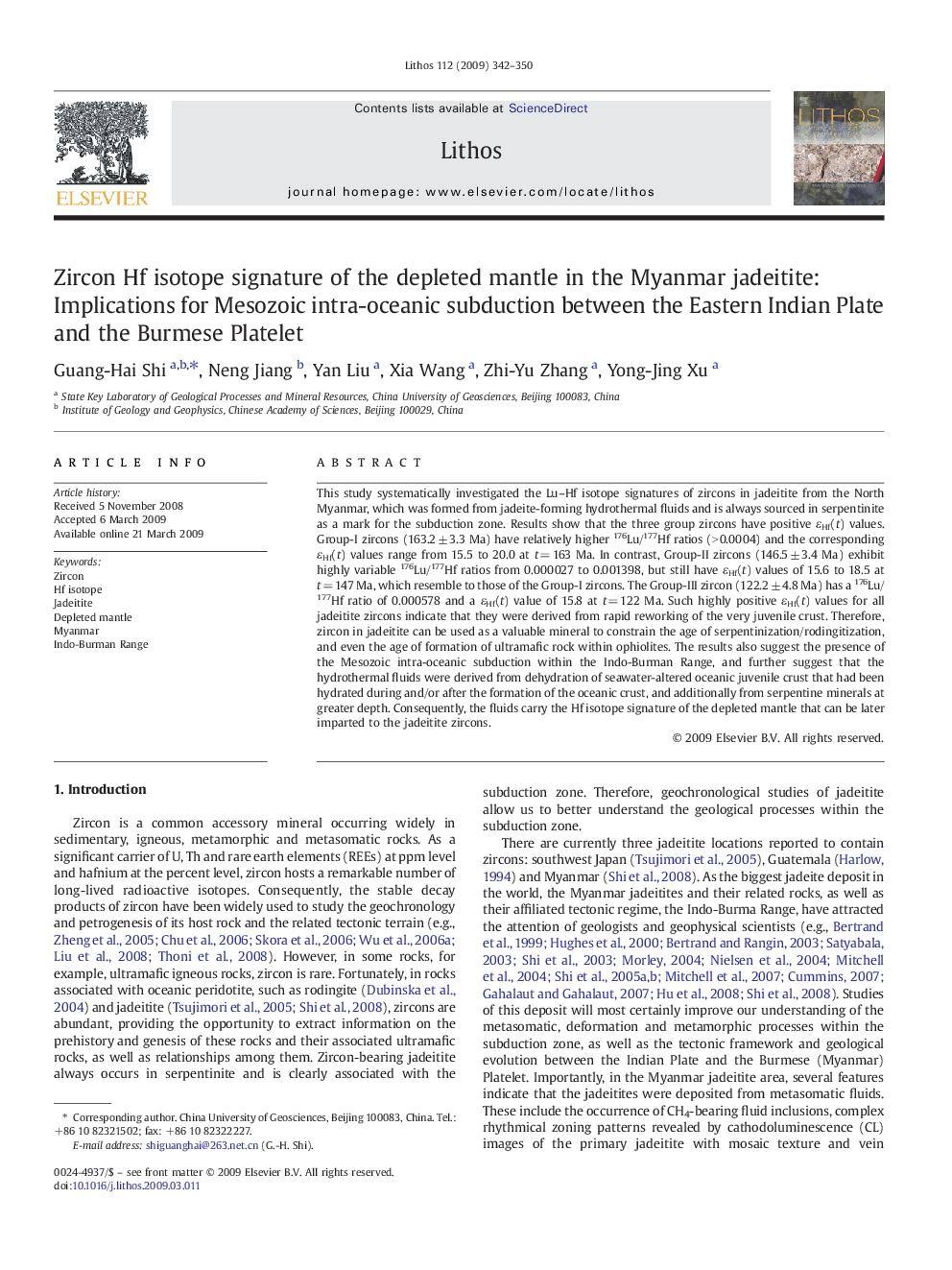| Article ID | Journal | Published Year | Pages | File Type |
|---|---|---|---|---|
| 4717079 | Lithos | 2009 | 9 Pages |
This study systematically investigated the Lu–Hf isotope signatures of zircons in jadeitite from the North Myanmar, which was formed from jadeite-forming hydrothermal fluids and is always sourced in serpentinite as a mark for the subduction zone. Results show that the three group zircons have positive εHf(t) values. Group-I zircons (163.2 ± 3.3 Ma) have relatively higher 176Lu/177Hf ratios (> 0.0004) and the corresponding εHf(t) values range from 15.5 to 20.0 at t = 163 Ma. In contrast, Group-II zircons (146.5 ± 3.4 Ma) exhibit highly variable 176Lu/177Hf ratios from 0.000027 to 0.001398, but still have εHf(t) values of 15.6 to 18.5 at t = 147 Ma, which resemble to those of the Group-I zircons. The Group-III zircon (122.2 ± 4.8 Ma) has a 176Lu/177Hf ratio of 0.000578 and a εHf(t) value of 15.8 at t = 122 Ma. Such highly positive εHf(t) values for all jadeitite zircons indicate that they were derived from rapid reworking of the very juvenile crust. Therefore, zircon in jadeitite can be used as a valuable mineral to constrain the age of serpentinization/rodingitization, and even the age of formation of ultramafic rock within ophiolites. The results also suggest the presence of the Mesozoic intra-oceanic subduction within the Indo-Burman Range, and further suggest that the hydrothermal fluids were derived from dehydration of seawater-altered oceanic juvenile crust that had been hydrated during and/or after the formation of the oceanic crust, and additionally from serpentine minerals at greater depth. Consequently, the fluids carry the Hf isotope signature of the depleted mantle that can be later imparted to the jadeitite zircons.
